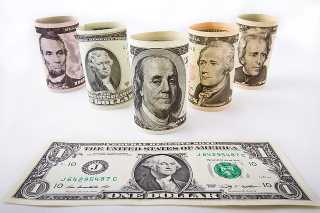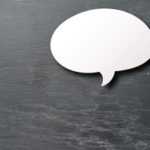

The pyramid on the dollar bill represents strength and duration. Some interpret the missing top as a sign that the country wasn’t finished yet. Similarly, the western face of the pyramid is in a shadow while the front is lighted, which some say indicates that the nation hadn’t explored the West or figured out what it would do for Western civilization yet.
When Benjamin Franklin, Thomas Jefferson, and John Adams gathered to design the seal (they were the first of three committees to make suggestions), they didn’t suggest a pyramid, but they did discuss an eye. They wanted the seal to have a symbol of divine providence, and the all-seeing eye shaped like the top of the pyramid is an ancient symbol of divinity.
Across the bottom bricks of the pyramid are the letters “MDCCLXXVI.” These letters aren’t random gibberish – they’re the Roman numerals for 1776, the year America declared its independence.
In front of the eagle – a uniquely American bird – is a shield, which is unsupported, to signify Americans should rely on their own virtue. The horizontal top bar of the shield symbolizes the federal government, and it holds together yet is supported by vertical bars that represent individual states (13 at the time it was designed).
It’s no surprise that the stars over the eagle represent the 13 colonies. But what’s surrounding them? The official description says it’s glory “breaking through a cloud” above the eagle, but current versions have a cloud surrounding the rays.
The eagle on the back of the dollar bill holds an olive branch (representing peace) in its right talon and arrows (symbolizing war) in its left talon. But on silver coins from 1801 to 1807, the eagle held them in opposite talons. European diplomats and journalists claimed putting the arrows in the eagle’s dominant talon was a symbol of aggression, and called it a reason to start a war, so America decided to switch the peaceful symbol to the dominant side on the dollar.
Unsurprisingly, the number 13 – the original number of American states – appears on the dollar bill. But you might be surprised by how many times the number shows up. There are 13 arrows, 13 olive branch leaves, 13 olive fruits, 13 stars above the eagle, 13 steps of the pyramid, and 13 bars on the shield. Plus, although this is probably a coincidence, “Annuit Coeptis” and “E Pluribus Unum” both have 13 letters.
The balancing scales on the Department of Treasury seal don’t represent a balanced budget (that’s handled by Congress), but are actually a symbol of justice. Under the scales are 13 stars, one for each of the original colonies. The key on the bottom signifies official authority.
Latin phrases appear a few times on the dollar bill. Above the pyramid reads “Annuit Coeptis”, which means “God has favored our undertaking”. Under the pyramid is the phrase “Novus Ordo Seclorum”, which is interpreted as “a new order of the ages.” On the banner the eagle holds is “E Pluribus Unum”, which also appears on almost all U.S. coins, which means “Out of many, one.”
On the front of the dollar bill, a one- or two-digit number appears four times. This number refers to the Federal Reserve Bank that printed the bill. A “1,” for instance, would mean it was made in Boston, while “2” refers to New York.
By the top left of the “1”s on the front of the bill, you’ll see a letter (A to H) and number (1 to 4). The combination refers to the position the note laid on the plate when it was printed. For example, A1 is the top left position, and H4 is the bottom right.
So there you have it. The next time you reach for a dollar bill, you may want to study it before you buy that coffee (assuming a dollar can buy a coffee any more).
Sources: philadelphiafed.org, kids.niehs.nih.gov, snopes.com, onedollarbill.org, greatseal.com
By Marissa Laliberte in rd.com (with modifications)
We host regular workshops on estate planning and elder law. If you're interested in getting your estate planning taken care of and protecting your well earned dollars, just click here to pick the day and time that work best.
Jeff Bellomo, Esq.


